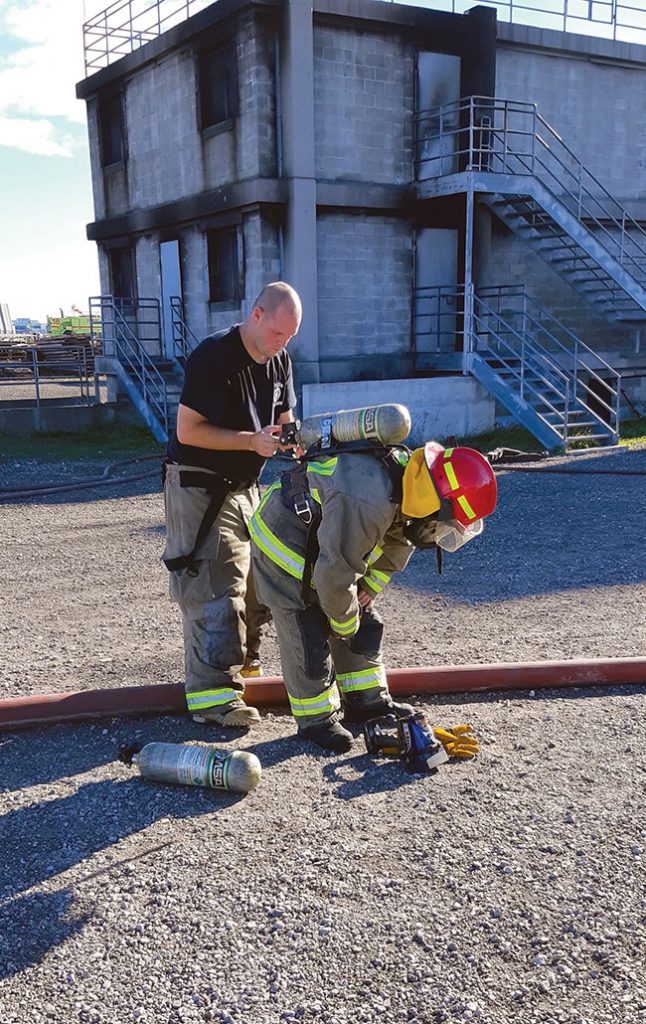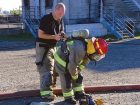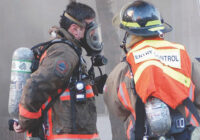
Features
Communication
Training
Trainer’s Corner: May 2019
I scheduled our department’s rookie training to take place through the first three months of the year (January-March). All of our members attend these training sessions, veterans and officers alike.
April 11, 2019
By Ed Brouwer
 Incident commanders can see the strengths and weaknesses of their team members by having them train together. I scheduled our department’s rookie training to take place through the first three months of the year
Incident commanders can see the strengths and weaknesses of their team members by having them train together. I scheduled our department’s rookie training to take place through the first three months of the yearI do this for several reasons. First, reviewing the basics is never a waste of time for any firefighter. Second, as the members train together we get to see how we work as a team and incident commanders will be able to see the strengths and weaknesses of the newbies.
When departments compartmentalize their rookies there are missed opportunities for teambuilding.
Sometimes I assign a veteran to a rookie – like a big brother program. Rookie training is between 10 and 13 weeks. Topics include:
- Orientation: Our department’s history, mission of the fire service, our role in the community
- Command & Control: Fire department organization, firefighter job descriptions, incident management (ICS) and command
- Personal Protective Equipment: Bunker gear
- SCBA: Respiratory hazards, effects of toxic gases, limitations of SCBA, emergency procedures
- Communications: Proper use of radio, arrival reports
- Fire Behaviour: Chemistry and physics of fire; BLEVE, stages of fire, states of matter, classes of fire
- Fire Hose & Appliances: Care and maintenance, hose tools, hose appliances, coupling, hose lays
- Nozzles, Fire Streams & Foam: Operations, stream application, hydraulics, friction loss
- Fire Suppression: Fire control, flammable gas, flammable liquids, fire extinguishment
- Forcible Entry: Tools, safety, maintenance, doors, breaching walls
- Cold Weather Fire Fighting: Frostbite, hypothermia, hydrants
- ICS 100: Application, primary functions, command
I designed a PowerPoint presentation, averaging 30 slides for each of these topics. Most topics have a written exam (20 multiple-choice questions) specifically designed to the topic and our department. A passing grade is 75 per cent.
We review each exam with the students so they know which questions they got wrong. Just telling a student he or she got a passing grade, without showing them what they got wrong, does not help him or her understand the topic. And that is the main objective of fire-service training.
I also designed in-house certificates. Each topic completed gets a seal – there are no “participator” awards. You either pass or you don’t.
There are also practical evaluations. Sometimes it is just a simple demonstration such as having firefighters don and doff their PPE. I use evolutions or scenarios to tie together individual core skills.
I remind you this is not just for our rookies. Officers and veterans are expected to participate. Each participant is given two attempts to successfully complete the training objective.
Through it all, I have my “Soap-Box”: Train right! Exercise! Stop smoking! Aspirin! Seat belts! Drink water! Don’t breathe smoke!
When we complete the rookie training, our practice nights go back on our regular training.
There is a lot of ground to cover seeing rookie training only covers the basics.
Over the years, I have discovered that students learn better in non-conflict zones. To help lift the spirits, I have used a Family Feud template for PowerPoint. You can download your free template at www.youthdownloads.com/games/family-fued-powerpoint.
This is a completely customizable Family Feud PowerPoint game (which now includes a Fast Money round) that you can edit and use for your training session. It takes a little know-how to edit it, but there are YouTube tutorials to help you.
You can make up your own questions:
Following are a few examples:
What are the parts of the Arrival Report?
The answers I had were: On Scene – 31 points; What you have – 25 points; Type of building – 18 points; What you need – 14 points; Establish command – nine points; and Going mobile – three points.
Parts of an SCBA
The answers I had were: Face mask – 24 points; Regulator – 20 points; Bypass valve – 17 points; Bottle – 14 points; Harness cradle – 11 points; Low air alarm – seven points; PASS – five points; Pressure gauge – two points.
Name something that affects wildland fire
The answers I had were: Wind – 40 points; Fuel type – 17 points; Terrain – 15 points; RH – 12 points; Temperature – seven points; Aspects – five points; Slope – four points.
My 10 Fast Money questions were: Extinguisher for electrical; Part of fire triangle; Step in BA bottle change; Step of arrival report; A state of matter; What is ICS?; Part of PPE; Date department founded; What is “to” & “from?”
You can customize these questions to fit the review objectives.
I divide the members into two teams, being sure to spread the rookies evenly among the teams. You can keep score or just let it play out. One of our members made an electronic “buzzer” box, and with all the bells and whistles (crowd booing, crowd cheering, Family Feud music) that come with the download it makes for a memorable event. Any time you can get your members to actually have fun learning, you as the trainer win. Each time I’ve used this at practice it has been well-received.
I hope this article has been of some help. Please remember to train like lives depend on it, because they most certainly do.
Ed Brouwer is the chief instructor for Canwest Fire in Osoyoos, B.C., deputy chief training officer for Greenwood Fire and Rescue, a fire warden, wildland urban interface fire-suppression instructor and ordained disaster-response chaplain. Contact Ed at aka-opa@hotmail.com.
Print this page

